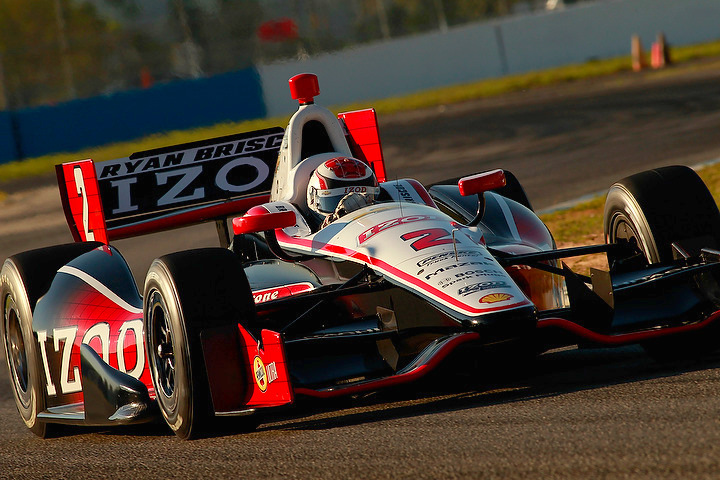Poor Dallara build quality bites IndyCar again
03/19/12 The problem with the fuel cell is the material selection and the supplier according to more information we received. Champ Car struggled with this as the Ethanol composition is new to all and required a very specific material. The material is lightweight and looks like Kevlar.
The same problem happened to Champ Car, who choose this same supplier and it was a complete mess, they did not fit, leaked and would not fill.
Had they gone to Dan Jones for design instead of doing it on the cheap it would have fixed the issue, that is what Champ Car finally did.
03/19/12 Funny thing about that cell………for years, like since the early 70's Indy cars have had a cell of ballistic cloth reinforced rubber and Kevlar. 1/2 inch or so thick, all the nut rings molded in place. Brutally strong, now suddenly a wafer thin cell is ok? According to AR1.com sources, the fuel receiver and cell Interface is incorrect and the fuel / vent air control tubing sizes are all wrong. This causes the cell to fill slowly and to not fill all the way. Dallara could not even copy the parts that have worked great since the first use of the single point refueling probe over 10 years ago.
All the F1 cars they design in Europe don't make refueling pit stops, so it must not be important to them. IndyCar isn't the first lemon Dallara have built. Dallara built the cars for the Hispania Racing F1 Team team's entry in the 2010 Formula One season. The Hispania team's financial problems—which delayed payment of money owed to Dallara and the completion of the cars—and the alleged low quality of the F110 chassis resulted in the two parties officially ending their partnership in May 2010.
03/18/12
 |
| With hideous looking sidepods, a rear wing big enough to be a boat sail, a heavy rear-end, and now fuel bladders that are so inconsistent in size IndyCar had to make a rule change to overcome the issue, IndyCar has a real winner in the DW12. |
With smaller, more efficient engines as the stated goal for its 2012 formula, INDYCAR reduced the fuel capacity from the 22 gallons used last season in the Dallara IR07 to 19 gallons with the new Dallara DW12.
But as teams found when they took delivery of the brand-new chassis, not every fuel cell (manufactured by Premier in the UK) was created equally.
Teams discovered significant variances in the as-delivered volume of each fuel bladder–which will hold E85 ethanol this season–when installed in the DW12, with a half-gallon shortage to as much as a one-gallon overage being reported. [Editor's Note: Dallara can't seem to get anything right]
For teams with the oversized fuel cells, reducing the capacity to the 19-gallon limit wasn’t an issue; the use of dense, grapefruit-sized plastic balls to reduce fuel cell volume is a common practice.
With each ball accounting for approximately 0.1-gallon capacity, a fuel cell measuring at 19.5 gallons would require five balls to hit its target, but for the teams with undersized cells, easy solutions to add the missing half-gallon capacity don’t exist.
The series, as a result of the number of undersized fuel cells currently in place (and growing unrest from the teams with undersized cells), made the call to bring the fuel capacity down to 18.5 gallons, the size of the smallest tank measured. SpeedTV.com
